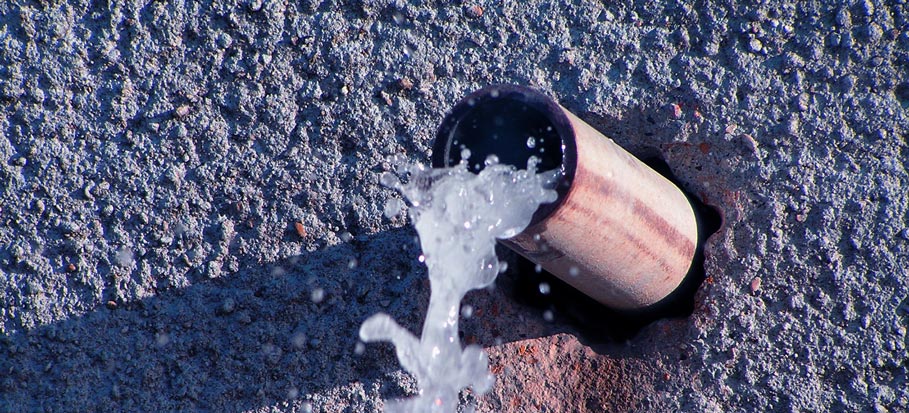The article listed below pertaining to Finding hidden leaks is truly attention-grabbing. Don't skip it.

Early detection of leaking water lines can mitigate a possible calamity. Some tiny water leakages might not be visible.
1. Analyze the Water Meter
Every house has a water meter. Inspecting it is a guaranteed manner in which aids you find leakages. For starters, shut off all the water sources. Make certain nobody will purge, make use of the faucet, shower, run the cleaning equipment or dishwasher. From there, most likely to the meter and also watch if it will certainly change. Given that no person is utilizing it, there must be no movements. That indicates a fast-moving leakage if it relocates. If you spot no adjustments, wait an hour or two and examine back once again. This indicates you might have a sluggish leak that can even be underground.
2. Inspect Water Intake
If you detect unexpected adjustments, in spite of your usage being the very same, it indicates that you have leakages in your plumbing system. A sudden spike in your bill indicates a fast-moving leak.
At the same time, a consistent increase each month, despite the very same behaviors, shows you have a slow-moving leakage that's likewise gradually intensifying. Call a plumber to completely check your property, specifically if you feel a cozy location on your flooring with piping underneath.
3. Do a Food Coloring Examination
When it involves water usage, 30% originates from toilets. Examination to see if they are running appropriately. Decrease flecks of food shade in the tank as well as wait 10 mins. There's a leakage between the container and bowl if the color somehow infiltrates your dish throughout that time without flushing.
4. Asses Exterior Lines
Do not forget to check your exterior water lines also. Ought to water seep out of the link, you have a loose rubber gasket. One small leak can throw away loads of water as well as surge your water costs.
5. Examine the circumstance and evaluate
Homeowners should make it a behavior to check under the sink counters and even inside cupboards for any bad odor or mold and mildew development. These 2 warnings suggest a leakage so punctual interest is needed. Doing regular inspections, even bi-annually, can conserve you from a significant problem.
If you recognize your house is currently old, keep a careful eye on your heaters, tubes, pipes and so on. Check for stainings and weakening as most pipelines as well as home appliances have a life expectancy. They will certainly additionally normally weaken because of damage. If you presume dripping water lines in your plumbing system, do not wait for it to escalate. Call a professional plumber right away so you don't end up with a dreadful mess in your home.
Early detection of dripping water lines can minimize a potential disaster. Some little water leaks may not be visible. Inspecting it is a surefire method that aids you discover leaks. One little leakage can squander tons of water and increase your water expense.
If you think leaking water lines in your plumbing system, don't wait for it to rise.
WARNING SIGNS OF WATER LEAKAGE BEHIND THE WALL
PERSISTENT MUSTY ODORS
As water slowly drips from a leaky pipe inside the wall, flooring and sheetrock stay damp and develop an odor similar to wet cardboard. It generates a musty smell that can help you find hidden leaks.
MOLD IN UNUSUAL AREAS
Mold usually grows in wet areas like kitchens, baths and laundry rooms. If you spot the stuff on walls or baseboards in other rooms of the house, it’s a good indicator of undetected water leaks.
STAINS THAT GROW
When mold thrives around a leaky pipe, it sometimes takes hold on the inside surface of the affected wall. A growing stain on otherwise clean sheetrock is often your sign of a hidden plumbing problem.
PEELING OR BUBBLING WALLPAPER / PAINT
This clue is easy to miss in rooms that don’t get much use. When you see wallpaper separating along seams or paint bubbling or flaking off the wall, blame sheetrock that stays wet because of an undetected leak.
BUCKLED CEILINGS AND STAINED FLOORS
If ceilings or floors in bathrooms, kitchens or laundry areas develop structural problems, don’t rule out constant damp inside the walls. Wet sheetrock can affect adjacent framing, flooring and ceilings.
https://www.servicemasterbyzaba.com/blog/how-to-detect-water-leakage-in-walls/

I came across that review on Leaking water lines while scouting around the internet. Sharing is caring. Helping others is fun. Many thanks for your time. Don't forget to check our blog back soon.